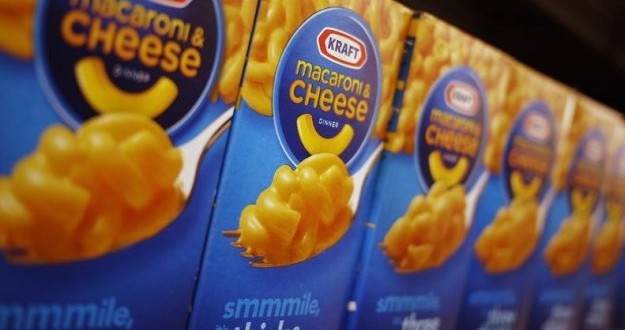Good news for North Americans with a soft spot for Kraft’s Macaroni & Cheese but worried about the potential health implications of artificial dyes.
Starting in January 2016, Original Kraft Macaroni & Cheese will get its familiar orange hue and cheese-ish flavor from ingredients like paprika, annatto and turmeric, Kraft says in a statement, instead of Yellow 5 and Yellow 6. Shapes Cups, Original Cups, Premium Flavors and Easy Mac will have no artificial flavors, preservatives or synthetic colors later next year.
The company says the change comes in response to what customers want, after apparently sitting around watching people make boxed dinners at home.
“We’ve met with families in their homes and watched them prepare Kraft Mac & Cheese in their kitchens. They told us they want to feel good about the foods they eat and serve their families, including everything from improved nutrition to simpler ingredients,” said Triona Schmelter, Vice President of Marketing, Meals, in the prepared statement.
So why the gap between removing dyes from three kid-targeted meals to the original box in blue? Kraft says it had to work out a recipe that would still taste same, which is always a battle for companies that want to update their products but don’t want to inspire the wrath of loyal customers who may be resistant to any changes.
“We weren’t ready to change the product until we were confident that Kraft Macaroni & Cheese tastes like Kraft Macaroni & Cheese,” Kraft said, according to the Associated Press.
Michael F. Jacobson, executive director of the Center for Science in the Public Interest, welcomed Kraft’s announcement.
“As consumers increasingly try to find dye-free foods, it’s increasingly going to be in the economic self-interest of Kraft and other food manufacturers to get rid of artificial dyes,” he says. “Kraft’s Macaroni and Cheese isn’t a health food. But replacing its Yellow 5 and Yellow 6 with natural colorings is a step in the right direction that will help families with children avoid the hyperactivity and other behavioral problems triggered or exacerbated by the chemicals.”
Agencies/Canadajournal
 Canada Journal – News of the World Articles and videos to bring you the biggest Canadian news stories from across the country every day
Canada Journal – News of the World Articles and videos to bring you the biggest Canadian news stories from across the country every day



